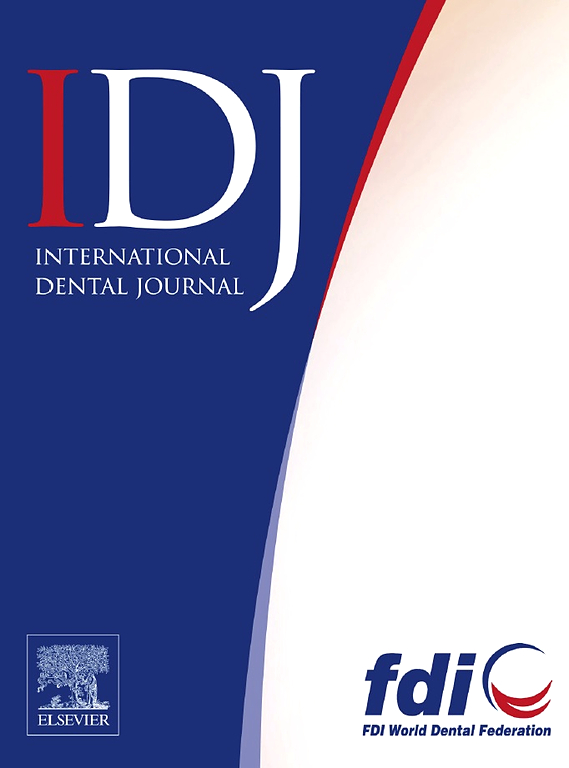A Comparative Analysis of Temporomandibular Disorders Using a Jaw Motion Analyzer and Surface Electromyography
IF 3.2
3区 医学
Q1 DENTISTRY, ORAL SURGERY & MEDICINE
引用次数: 0
Abstract
Introduction
Quantification of mandibular movement allows both dynamic and static evaluation of temporomandibular joint (TMJ) status, which would provide important information in temporomandibular disorders (TMD) diagnosis and treatment. The ultrasonic Jaw Motion Analyzer (JMA; zebris) system could analyse the 3-dimensional motion of the mandible without any radiation. Using the JMA, this study aimed to investigate the differences in mandibular movements and masticatory muscle activities among patients with different diagnoses of anterior disc displacement based on TMJ magnetic resonance imaging (MRI).
Methods
Seventy-four adult subjects with 148 TMJ were divided into 3 groups based on MRI: the No Disc Displacement (NDD), the Anterior Disc Displacement with Reduction (ADDWR), and the Anterior Disc Displacement without Reduction (ADDWoR). The JMA and surface electromyography (sEMG) were used to measure several mandibular movements and sEMG. Comparison and correlation analysis were performed among groups.
Results
Significant differences were found between NDD, ADDWR, and ADDWoR in the following items: the incisal range of motion during right and left laterotrusion, maximum mouth opening, the surface area of Posselt envelope movement in the frontal plane, condylar range of motion in opening movement, and sEMG of masseter during maximum voluntary clenching.
Conclusion
Significant differences were found in mandibular movements and muscle activity between patients with NDD, ADDWR, and ADDWoR.
Clinical Relevance
The JMA and sEMG provide important information on mandibular movement and muscle activities, which may provide additional insights into TMD diagnosis and treatment.
下颌运动分析仪与表面肌电图对颞下颌疾病的比较分析
下颌运动的量化可以对颞下颌关节(TMJ)状态进行动态和静态评估,这将为颞下颌疾病(TMD)的诊断和治疗提供重要信息。超声颚运动分析仪(JMA);Zebris系统可以在没有任何辐射的情况下分析下颌骨的三维运动。本研究旨在探讨基于TMJ磁共振成像(MRI)诊断不同前盘移位的患者下颌运动和咀嚼肌活动的差异。方法74例成年148例颞下颌关节患者,根据MRI表现分为无椎间盘移位(NDD)组、前位椎间盘移位伴复位(ADDWR)组和前位椎间盘移位不复位(ADDWoR)组。用JMA和表面肌电图(sEMG)测量下颌运动和表面肌电图。组间比较及相关分析。结果NDD组、ADDWR组和ADDWoR组在左右侧挤压时的切牙活动范围、最大开口、额平面波塞尔包膜运动表面积、开口运动时的髁突活动范围和最大自主握紧时咬肌肌电图上均存在显著差异。结论NDD、ADDWR和ADDWoR患者的下颌运动和肌肉活动有显著差异。JMA和sEMG提供了下颌运动和肌肉活动的重要信息,这可能为TMD的诊断和治疗提供额外的见解。
本文章由计算机程序翻译,如有差异,请以英文原文为准。
求助全文
约1分钟内获得全文
求助全文
来源期刊

International dental journal
医学-牙科与口腔外科
CiteScore
4.80
自引率
6.10%
发文量
159
审稿时长
63 days
期刊介绍:
The International Dental Journal features peer-reviewed, scientific articles relevant to international oral health issues, as well as practical, informative articles aimed at clinicians.
 求助内容:
求助内容: 应助结果提醒方式:
应助结果提醒方式:


